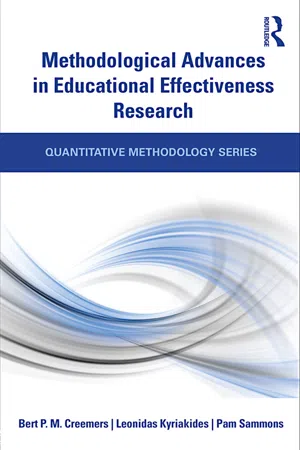What is special about longitudinal designs?
One fundamental characteristic of a longitudinal design is that it involves observations of the same units (for example, students) at more than one point in time. It is thus different from the cross-sectional (or survey) design, in which the units are only observed once. Another fundamental characteristic of longitudinal design is that it is observational; it does not involve manipulations, such as assigning different groups of subjects to different treatments. In this way it is different from the experimental design, which does exactly this.
However, the characterization of longitudinal design as involving repeated observations of the same units is much too simplified to carry any important information, and further complexities are needed to fill out the picture. However, it must also be stressed that it is possible to combine experimental and longitudinal designs in a large variety of ways. For example, one can create longitudinal intervention designs (Antoniou 2009; Demetriou 2009).
One may also ask what it means to observe units at more than one point in time. Suppose that we conduct a survey at the end of grade nine, in which we include questions about which school marks the students obtained in mathematics in grades six and nine. Given that we have information about the students’ level of school performance at two time points, it could be claimed that this is a longitudinal study. Such a design is commonly referred to as a retrospective longitudinal design, but it is considered to generate data of lower quality than a study with a prospective longitudinal design, which in our example would involve starting in grade six and following the students through to grade nine. There are two reasons why the prospective design is superior. One is that the retrospective design relies on memory, and it is a well known fact that human memory is unreliable and often systematically biased. The other is that the grade nine sample is likely to be a biased non-representative sample because of processes of attrition due, for example, to movement, non-promotion and grade-skipping. For these reasons, retrospective longitudinal designs should be avoided. However, it must be realized that prospective longitudinal designs often also include certain elements of retrospection in questionnaire items as well.
Even if it is agreed that there should be repeated observations of the same units at more than one point in time, one may still ask if there should be a certain minimum number of time points for a design to qualify as longitudinal. It has been observed (Rogosa et al. 1982) that when there are only two time points, the amount of information available for studying individual change and development is very limited, and that it is therefore usually desirable to have observations from more time points. There is, however, general agreement among methodologists that a design with observations at two points still qualifies as longitudinal.
Another part of the definition of a longitudinal design that lacks clarity is the meaning of the term ‘unit’. One of the characteristics of EER is that it operates with several different ‘units’, such as students, teachers, classroom, schools, school-districts and school-systems, and these are typically hierarchically nested. One obvious research design is to apply repeated measurements to the students along with observations of characteristics of their teachers, classrooms and schools. Such designs, in which the micro-level units are followed over time, correspond to our intuitive notions of the meaning of longitudinal research, and these are referred to with different labels. Keeves (1988) refers to such designs as ‘time series designs’, while others call them ‘panel designs’ or just longitudinal designs.
It is also possible to conduct longitudinal research in which there are new micro-level units at each wave of measurement. Consider, for example, research in which we are interested in the stability and consistency over time of achievement differences between schools. This research issue has the school as a unit, and to investigate it empirically would require that we conduct repeated measurements of a set of schools by observing the level of achievement of, for example, their grade nine students at each measurement. However, for each of these measurements, there will be a new set of grade nine students in each school, so the design is longitudinal with respect to the schools but not with respect to the students.
Another example of a design that is longitudinal at a macro-level but not a micro-level is the design adopted by many of the international investigations of educational achievement (for example, PIRLS, PISA and TIMSS) in which studies are repeated every third, fourth or fifth year. The repetition is done in such a way that samples are drawn from the same population and the achievement tests are linked so that results are expressed on the same scales. This provides a basis for investigating trends in the levels of achievement for those countries that participate repeatedly. Thus, this design is longitudinal at the level of school systems, but not at the student level. Keeves (1988) refers to this kind of longitudinal research as a ‘trend design’, and while this kind of design has not been common in previous educational research, it has been used more frequently within other disciplines (such as political science) under labels such as ‘time-series cross-sectional designs’.
From the discussion above, it is clear that even though the basic idea of the longitudinal design is simple, there are many different versions and possibilities. This is one of the reasons why this is such a useful tool in EER. The benefits of such longitudinal research in EER will now be discussed.
